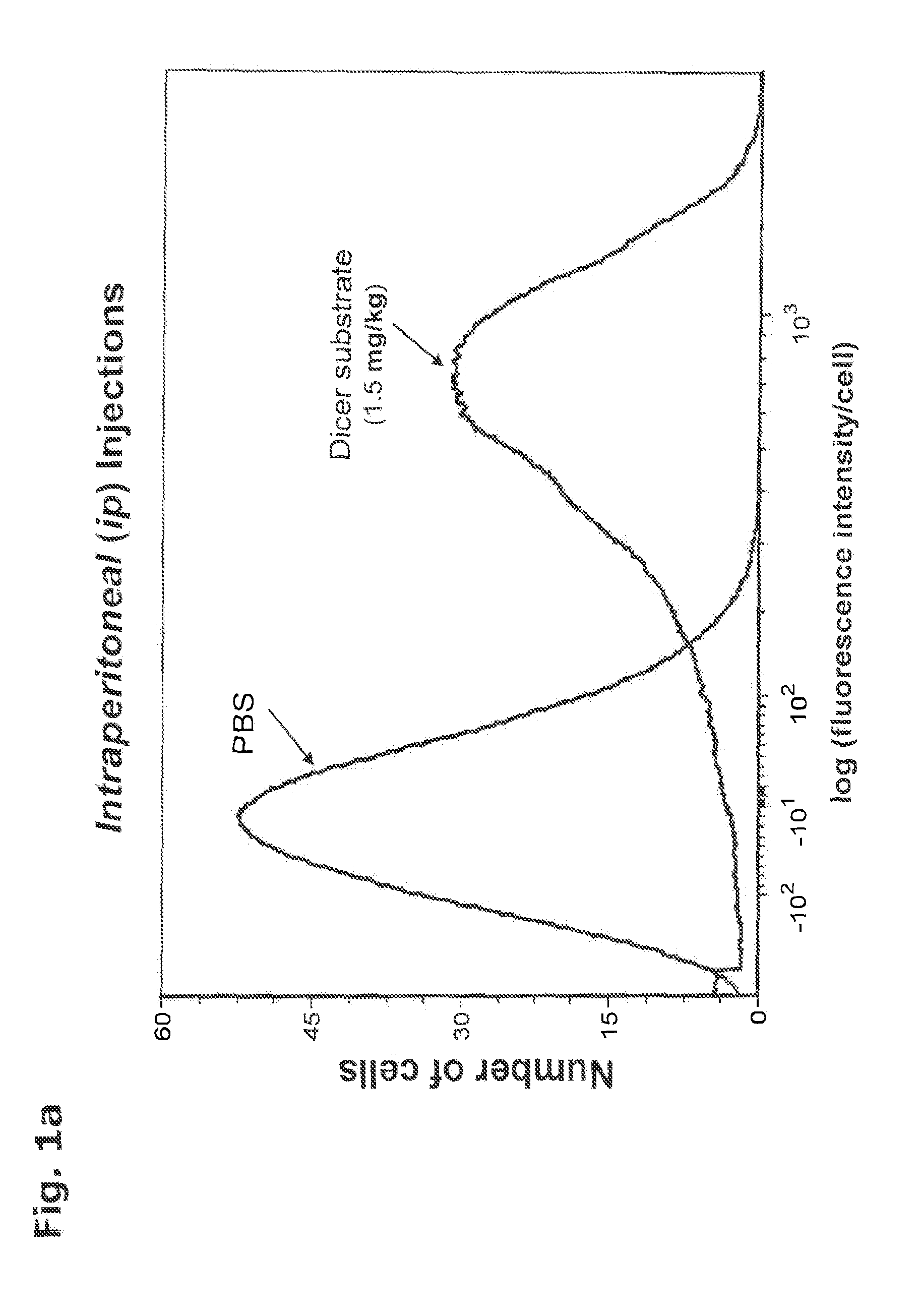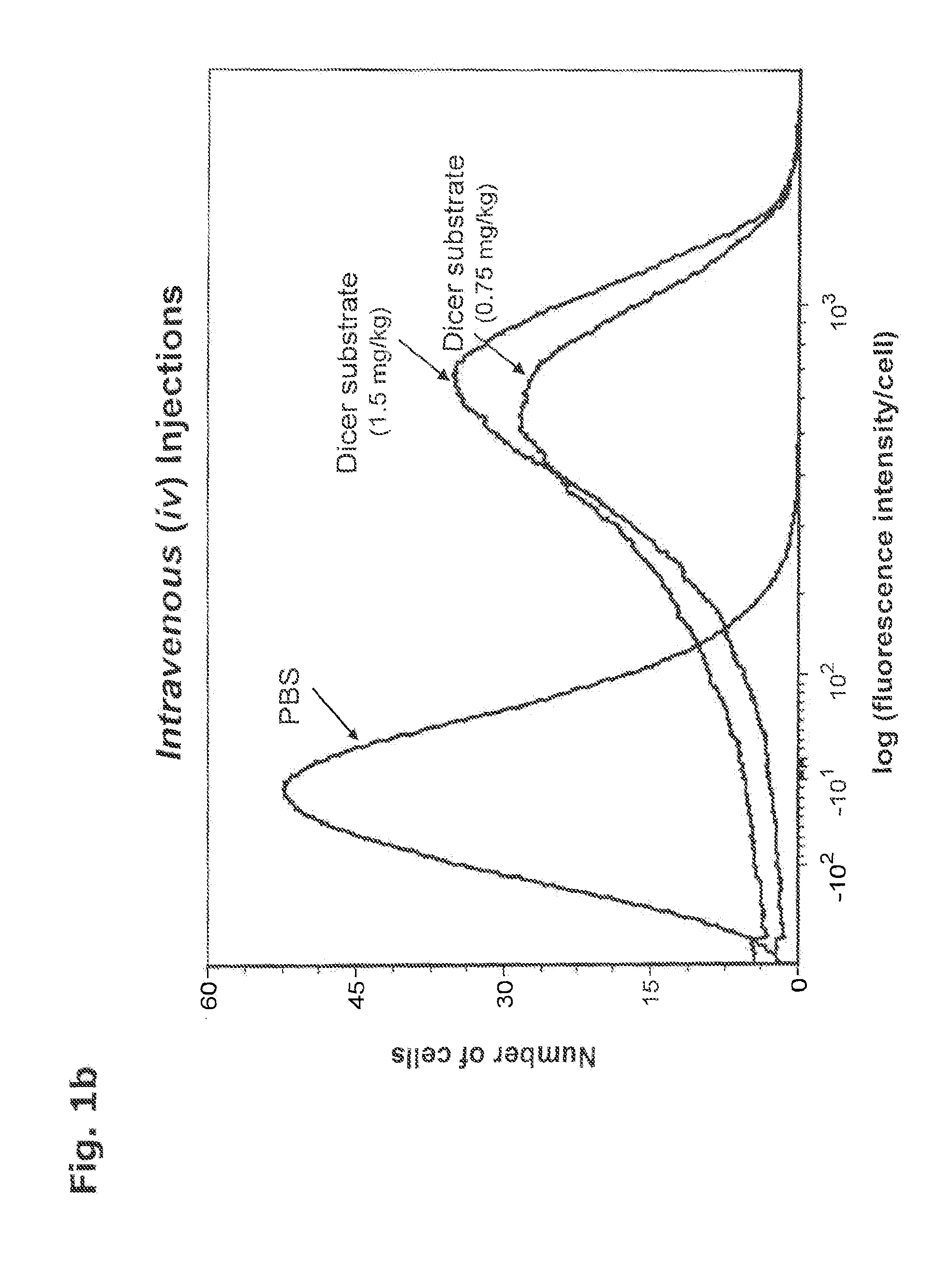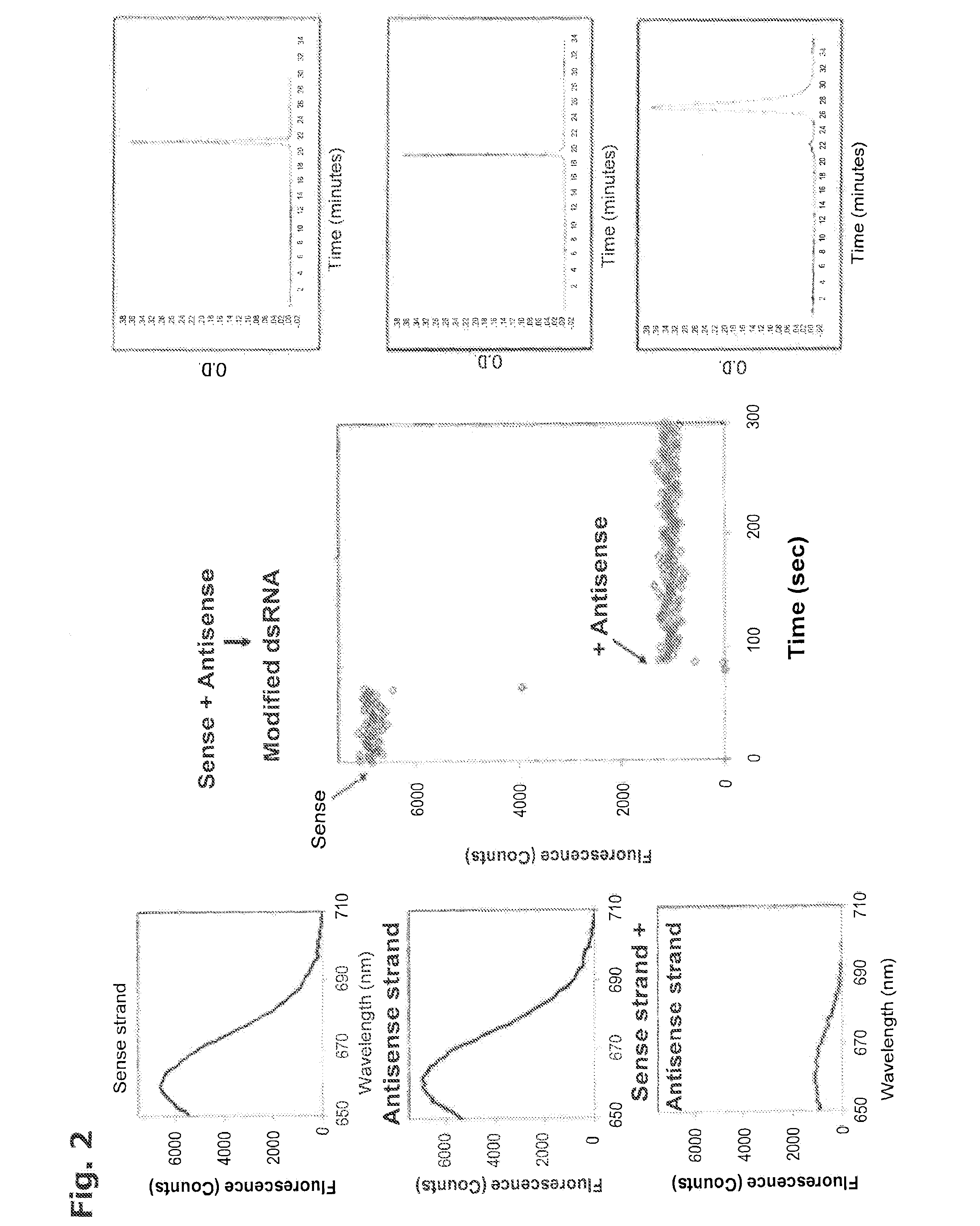In Vivo Delivery of Oligonucleotides
a technology of oligonucleotide and oligonucleotide, which is applied in the field of in vivo delivery of oligonucleotide, can solve the problems of limited development and use of therapeutic oligonucleotides, limited application, and low uptake of these compounds by eukaryotic cells, and achieves the effect of increasing the delivery of hes-oligonucleotid
- Summary
- Abstract
- Description
- Claims
- Application Information
AI Technical Summary
Benefits of technology
Problems solved by technology
Method used
Image
Examples
example 1
In Vivo Delivery of an Oligonucleotide Containing an H-Type Excitonic Structure
[0346]In order to show that oligonucleotides can be delivered inside live cells without toxicity in a live organism, a strand of DNA containing a sequence of 24 nucleic acids complementary to β-actin (CCC GGC GAT ATC ATC ATC CAT AAC (SEQ ID NO:1) (Sokol et al. Proc. Natl. Acad. Sci. USA 95:11538-43 (1998)) was synthesized and covalently labeled on opposite ends of the strand with the fluorophore (N-Ethyl-N′-[5-(N″-succinimidyloxycarbonyl)pentyl]-3,3,3′,3′,-tetramethyl-2,2′-indodicarbocyanine chloride). The labeled oligonucleotide was purified by reverse phase high pressure liquid chromatography (hplc) and then lyophilized. The presence of an intramolecular HES in the oligonucleotide was confirmed by absorbance spectrometry and fluorometry. All measurements were carried out in phosphate buffered saline (PBS) in which the labeled oligonucleotide was readily solubilized.
[0347]A volume of two hundred microlit...
example 2
Quantitation of In Vivo Delivery of an Oligonucleotide Containing an H-Type Excitonic Structure
[0350]In order to quantitate the in vivo delivery of oligonucleotides inside live cells without toxicity in a live organism, a Dicer substrate was prepared as described in Example 3. The sequence for the Dicer substrate, i.e., the sense strand and antisense strand for eGFP (Kim et al. Nature Biotech. 22:321-5 (2004)), was chosen so that no complementary pairing in the subject mice (standard, nontransfected BALB / C strain) could take place. The double-labeled lyophilized dsRNA was solubilized in phosphate buffered saline (PBS). The presence of an intramolecular HES in the oligonucleotide was confirmed by absorbance spectrometry and fluorometry.
[0351]A volume of two hundred microliters of the labeled oligonucleotide at a concentration of 5 micromolar or 10 micromolar in PBS was injected into the tail vein or the peritoneum of each 10-12 week old BALB / C mouse (0.75 or 1.5 milligrams / kilogram)....
example 3
Formation of an Intramolecular HES in Real-Time
[0353]The formation of an HES is associated with quenching of fluorescence;
[0354]specifically, the fluorescence of the dimer is reduced relative to that of the individual components. Therefore, in order to illustrate the process of HES formation, two complementary strands of RNA, i.e., the sense strand and antisense strand (Kim et al. Nature Biotech. 22:321-5 (2004)), were each labeled with N-Ethyl-N′-[5-(N″-succinimidyloxycarbonyl)pentyl]-3,3,3′,3′,-tetramethyl-2,2′-indodicarbocyanine chloride and then added together; the fluorescence intensity of the latter solution was then compared with those of the components, i.e., the single strands alone.
[0355]The fluorescence spectra of the two singly-labeled strands are shown in the top two panels on the left side of FIG. 2. The purity of each strand as measured by reverse phase hplc is also shown in the corresponding panels on the right side of FIG. 2.
[0356]With a data acquisition rate of 1 d...
PUM
| Property | Measurement | Unit |
|---|---|---|
| excitonic structure | aaaaa | aaaaa |
| length | aaaaa | aaaaa |
| excitonic structures | aaaaa | aaaaa |
Abstract
Description
Claims
Application Information
 Login to View More
Login to View More - R&D
- Intellectual Property
- Life Sciences
- Materials
- Tech Scout
- Unparalleled Data Quality
- Higher Quality Content
- 60% Fewer Hallucinations
Browse by: Latest US Patents, China's latest patents, Technical Efficacy Thesaurus, Application Domain, Technology Topic, Popular Technical Reports.
© 2025 PatSnap. All rights reserved.Legal|Privacy policy|Modern Slavery Act Transparency Statement|Sitemap|About US| Contact US: help@patsnap.com



